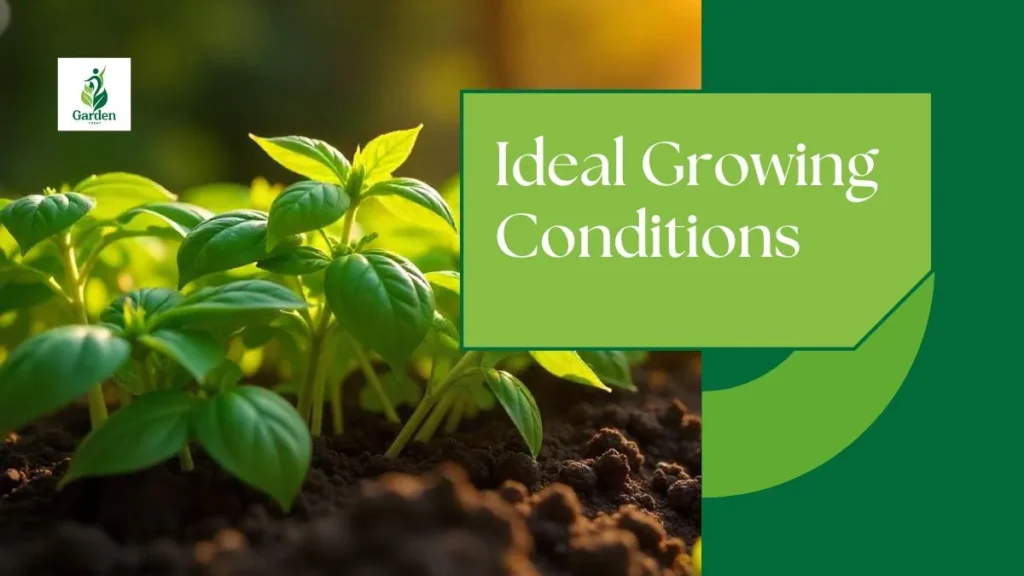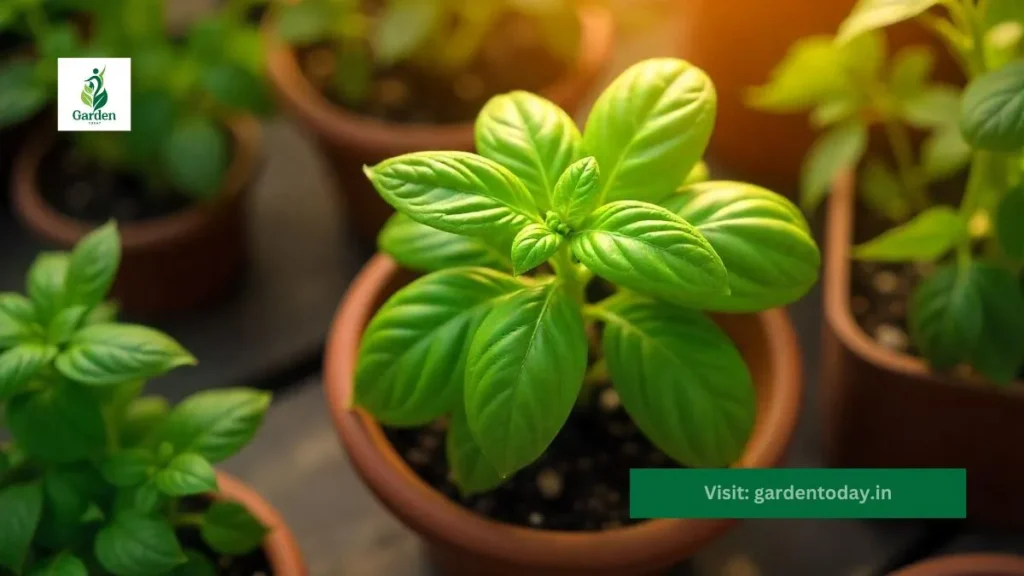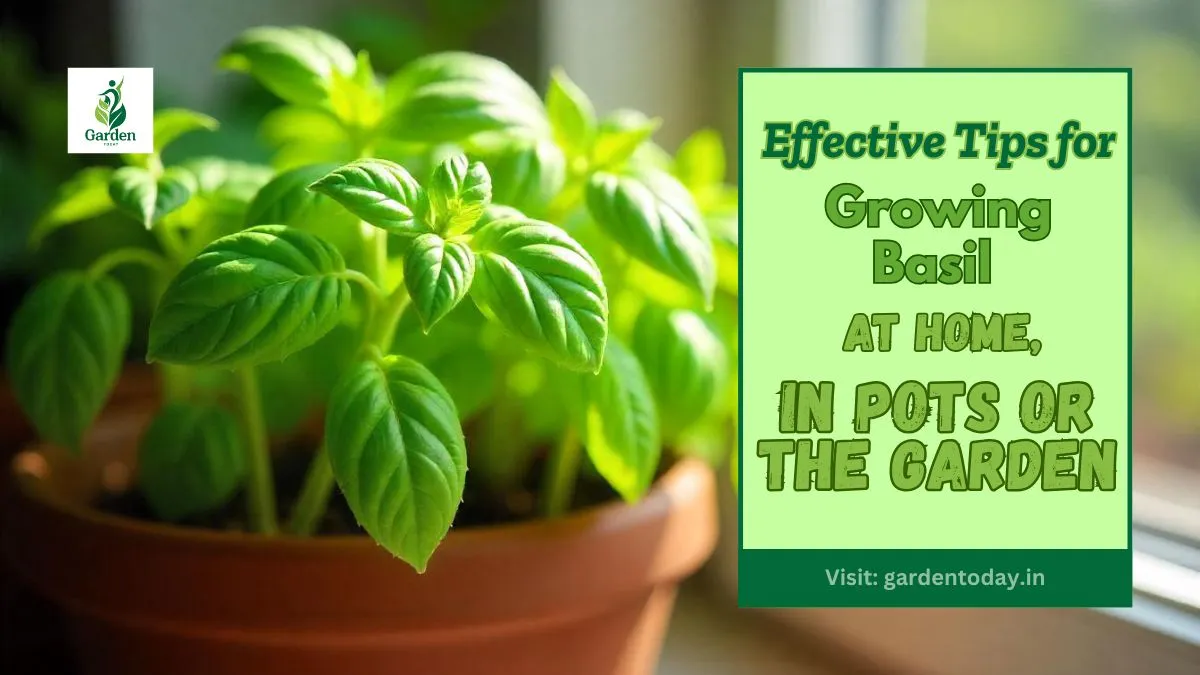Basil is regarded as the most widely loved and popularly used herb throughout the world. This tender annual, a member of the mint family, is praised for its scented leaves and distinct taste. Due to its flexibility, it is regarded as a principal herb in many kitchens, primarily in Italian and Southeast Asian cuisines. From brightening up a selection of Caprese crescent salads to adding depth to Thai curries, basil is a must-have herb for innumerable traditional recipes. While sweet basil is still the most widely used and common type found in supermarkets and used in Italian cuisine, there is a variety of basil types to discover that are appealing in form, scent, and flavor.
If you’ve ever thought about cultivating your basil at home, I can assure you that each amateur gardener will find this experience deeply satisfying. Growing your means you will always have fresh supplies of leaves on hand. Additionally, this guide presents helpful and reliable instructions for cultivating basil for both novice and expert gardeners looking to grow their basil in their garden, patio, or even windowsill.
Sowing and Planting Basil
Basil is an herb that needs warm weather, and its growing period starts from early spring until the end of summer. It is best to sow the seeds from March to August. Successive sowing will give better results, as it will allow you to harvest continuously throughout the warmer months. You should transplant your basil outdoors anytime between May and August. This is when the risk of frost should be gone and the temperatures are consistently warm. Harvesting usually starts in July and continues onwards till September.
While sowing seeds, make sure to space them roughly 30 cm apart in both directions to allow for airflow and space for growth. Basil seeds should be sown on the surface of the soil. They require light for germination, so do not cover them. As for the first sowings, one region we recommend is indoors, especially on warm windowsills, where they receive sun, as it creates stable conditions for seedlings before they go outdoors.

Ideal Growing Conditions
Basil prefers fertile soil with good drainage and moisture retention. A slightly acidic to neutral pH (6.0 to 7.0) is optimum. A warm, sheltered position with good light is best, but strong direct sunlight around midday, especially in hotter countries, should be avoided as it will burn the leaves. If growing basil indoors, it’s best to position the plant on a windowsill facing south or west.
Basil grows well in a greenhouse or polytunnel where there is sufficient warmth and protection from the wind. Likewise, a bright windowsill or balcony is also ideal as long as the plant is protected from harsh midday sunlight and strong wind.
Sowing Instructions for Best Results
To start sowing, use peat-free seed compost or any high-quality multi-purpose compost. To encourage healthy germination, maintain the temperature at around 20 degrees Celsius (68 F). Within 7 to 14 days, seeds should start to sprout. At this stage, water the plants sparingly, as excess water can lead to rot or fungal problems. When seedlings develop their first true leaves and are large enough to handle, transplant them into individual pots.
Increase their outdoor exposure for a few hours each day over the course of one to two weeks to gradually accustom them to the outdoors before the transference. This process reduces transplant shock and helps the plant adjust to outdoor conditions.
Ongoing Basil Care
Ensure that basil is watered on a regular basis, but be careful not to overdo it. Keeping the soil moist but not excessively soggy is important. Watering at the base of the plant makes it easier to keep the leaves dry; this prevents mildew and other fungal diseases. Watering the plant at the hottest time of day can cause stress and leaf burn.
To promote healthier and bushier plants, pinch out the top sets of leaves at six inches tall. This practice helps encourage branching and delayed flowering, which helps counter the bitterness that can infest the leaves. To accommodate the root system, you may have to pot the plant into larger containers as the basil matures. To prolong your harvesting period, bring the potted basil inside when the temperatures start to drop.

Reviving Supermarket Basil
Basil from the supermarket is convenient for buying; however, it is often rootbound and neglected. People tend to these plants superficially, not with the intention of long-term growth. To revive supermarket herbs, gently remove the plants, separate them, and place each into its own clean bowl filled with fresh compost. While the plants recover, warmth and indirect sunlight aid the process. Once fully grown, you can only place these plants outdoors after acclimatization, which naturally involves demolition.
Pest and Disease Management
As previously mentioned, basil does not require a lot of attention. However, this does not mean that basil is immune to a number of other pests and diseases. Outdoors, slugs and snails can munch on tender leaves, especially during wet weather. Indoors or in greenhouses, whitefly and red spider mites are a possibility. Grey mold and powdery mildew are also dangerous, as they tend to thrive in humid conditions.
To combat these issues, naturally, remove any affected leaves to eliminate the spread of disease. Keeping the air conditioning on aids in solving vertical circulation issues, making it easier to keep leaves dry while watering, and simultaneously overcrowding. Natural remedies such as neem oil or insecticidal soap effectively combat pests.
Harvesting Tips
Basil is easy to harvest, and one should do it routinely to promote growth. Cut the stems with scissors/snips above a leaf pair. Don’t pick more than a few side shoots to allow regrowth. To avoid shocking the plant, don’t remove more than one-third of the plant at once. Most importantly, do not wash basil leaves until you intend to use them because excess moisture will cause them to go rotten very fast.
Culinary Uses
For the basil to give its unique flavor, it should be served raw. Basil goes perfectly with tomatoes, garlic, cheese, and olive oil, which are the main ingredients in both pesto and Caprese salad, alongside pasta sauces. It is also superb in soups, sandwiches, curries, and even cocktails. For the greatest aroma, add basil at the end of cooking because heat will dull the smell. Instead of chopping the leaves, they should be torn to maintain the natural oils and fragrance.
Storing Basil
Basil is best when used fresh because it does not freeze or dry well. To store harvested basil, you should place the stems upright in a jar of water as if it is a flower bouquet. Remember to change the water every day and place the container in a room-temperature place where there is no sunlight coming toward it. This method can help strengthen basil for a few days.
Sourcing Seeds and Exploring Varieties
The general public can easily buy basil seeds from any online shop or a local gardening store. This is beneficial as it not only saves money but also helps basil enthusiasts grow from seeds, which unlocks a whole host of varieties for them to pick and choose from that aren’t readily available in supermarkets. This could be made easier if a group of friends came together and split the packet to grow multiple types in one season.
Some popular basil varieties include
- Sweet Basil Genovese: The classic choice for pesto and Italian cooking.
- Crimson King: Along with its flavor, deep purple leaves make this variety ornamental.
- Greek Basil: Small, sweet leaves make this plant a robust, bushy and compact plant.
- African Blue: Features bright purple-veined leaves. It also has flowers that are appealing to pollinators.
- Thai Basil: Ideal for Southeast Asian dishes due to its spiciness and hint of licorice flavor.
- Cinnamon Basil: This stir-fried dish is popular for its unusual type along with its spicy, clove-like aroma.
- Red Rubin: In addition to its bold, shallow color, it is aromatic and deeply rich, which adds great flavor while also beautifying your garden.
Having a basil plant is an extremely satisfying process because its delightful aroma offers you joy, not to mention the connection to the food that you can savor and relish, which starts with the soil itself. My experience from spring till fall tells me that all a person requires is a little attention towards watering, sunlight, and pruning. With the right balance of care, one can reap the rich benefits of basil all year round. Once you’ve mastered the fundamentals, a plethora of varieties await your discovery in terms of taste and color. Growing basil in your backyard, or within the confines of your kitchen, offers the joy of pure, refreshing, and fresh basil.
Visit Garden Today
